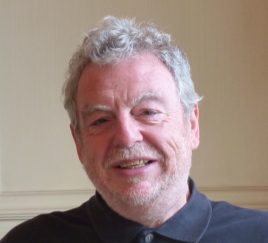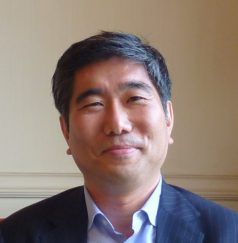 Artist talk
Artist talkTuesday 25 June 2013
6:00pm – 7:30pm
Cross-Cultural Partnerships and Environmental Engagement by the late Chris Wainwright with Yusaku Imamura
Drinks reception: 7:30pm – 8:00pm
13/14 Cornwall Terrace, Outer Circle, London, NW1 4QP
Organised by The Daiwa Anglo-Japanese Foundation
This talk was given by the artist, the late Chris Wainwright and Yusaku Imamura, Director, Tokyo Wonder Site.
The value of cross-cultural engagement and the sharing of experiences is primarily based on the recognition of difference and the mutual benefits of dialogue, relationships and innovative practices that come from an increased understanding of those differences. The facilitation of such dialogue and opportunities requires a high degree of organisational support and vision. The talk explored some existing models of cultural co-operation primarily between the UK and Japan and also explored the need to find new models and approaches to some of the pressing issues of our time such as the increasingly urgent need for a creative response to climate change and environmental issues. Within this context, the talk explored the role of artists and how they can make a positive contribution individually and collectively to our rapidly changing global environment.
Chris Wainwright worked primarily through photography and video as a means of addressing issues related to light and energy, both natural and artificial, in urban and rural environments. The work was made as a direct response to ‘place’ and often the result of an intervention, a temporary action or construction made for the camera as a unique form of witness for the recording of light. Wainwright was interested in the cause and effect relationship between urban and depopulated spaces and the way light is deployed as a form of illumination, communication, invasion and pollution. In particular his work addressesed the pressing issues of climate change and how we as humans through our lifestyles and increasing demands for energy are leaving a potentially catastrophic legacy for our future generations.
The title, A Catalogue of Errors, is derived from the semaphore signal for ‘Error’. He worked with semaphore as a semi-obsolete signalling system for a number of years, incorporating it into a series of photographic performances and actions. These works were made at night and placed adjacent to places where there have been natural disasters or sites of environmental fragility caused by human intervention and exploitation of resources. The work in this exhibition was mostly made in the Tohoku region in Japan both before and after the 2011 Great East Japan Earthquake and tsunami. The more recent work was made directly in coastal areas that have been severely affected by the events of March 2011.
This event can be watched on YouTube in three parts, please click on the links below to view:
About the contributors

The late Professor Chris Wainwright
The late Professor Chris Wainwright was Head of Camberwell, Chelsea and Wimbledon Colleges of Art. He was a member of the Tate Britain Council and Chair of the Trustees of Cape Farewell, an artist run organisation that promotes a cultural response to climate change. He was an active professional artist and curator working in photography and video. He was exhibited in exhibitions including Troubled Waters at The Kuandu Museum of Fine Art, Taipei, Rise, a video installation for the Heijo-kyo Palace as part of the 1300 year celebrations of the city of Nara, Japan and What Has To Be Done, a photo/performance event for Aldeburgh Arts 2011. His photographic work is held in many major collections including the Victoria and Albert Museum, London; the Arts Council of England; Bibliotheque Nationale, Paris; the Polaroid Corporation, Boston, USA, and Unilever, London.

Yusaku Imamura
Yusaku Imamura is Director of Tokyo Wonder Site, a creative platform of Tokyo World Creative City that supports and promotes emerging creators and artists. Besides providing systematic support for artistic creation, Tokyo Wonder Site also acts as an experimental on-site laboratory to engage with contemporary issues such as climate change and cultural diversity, education through international networks. He was until recently, Counsellor on Special Issue to the Tokyo Governor, engaged with re-organizing the cultural policy of the Tokyo Metropolitan Government to focus on a new comprehensive strategy that emphasises creative industries, urban planning and education. He is trained as an architect and holds a Master of Science and Technology (Architecture) from Nihon University.